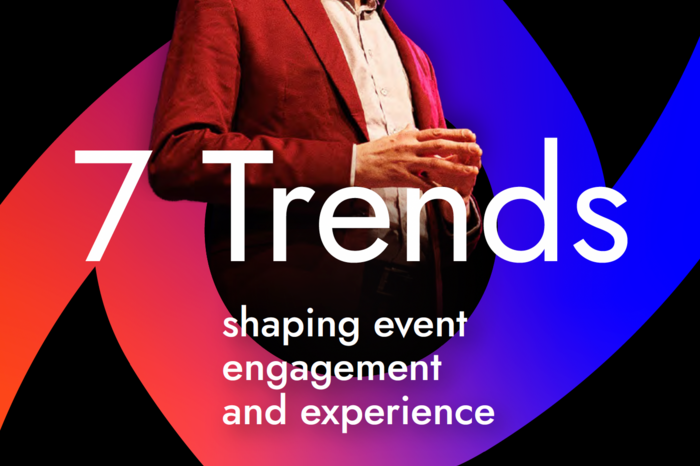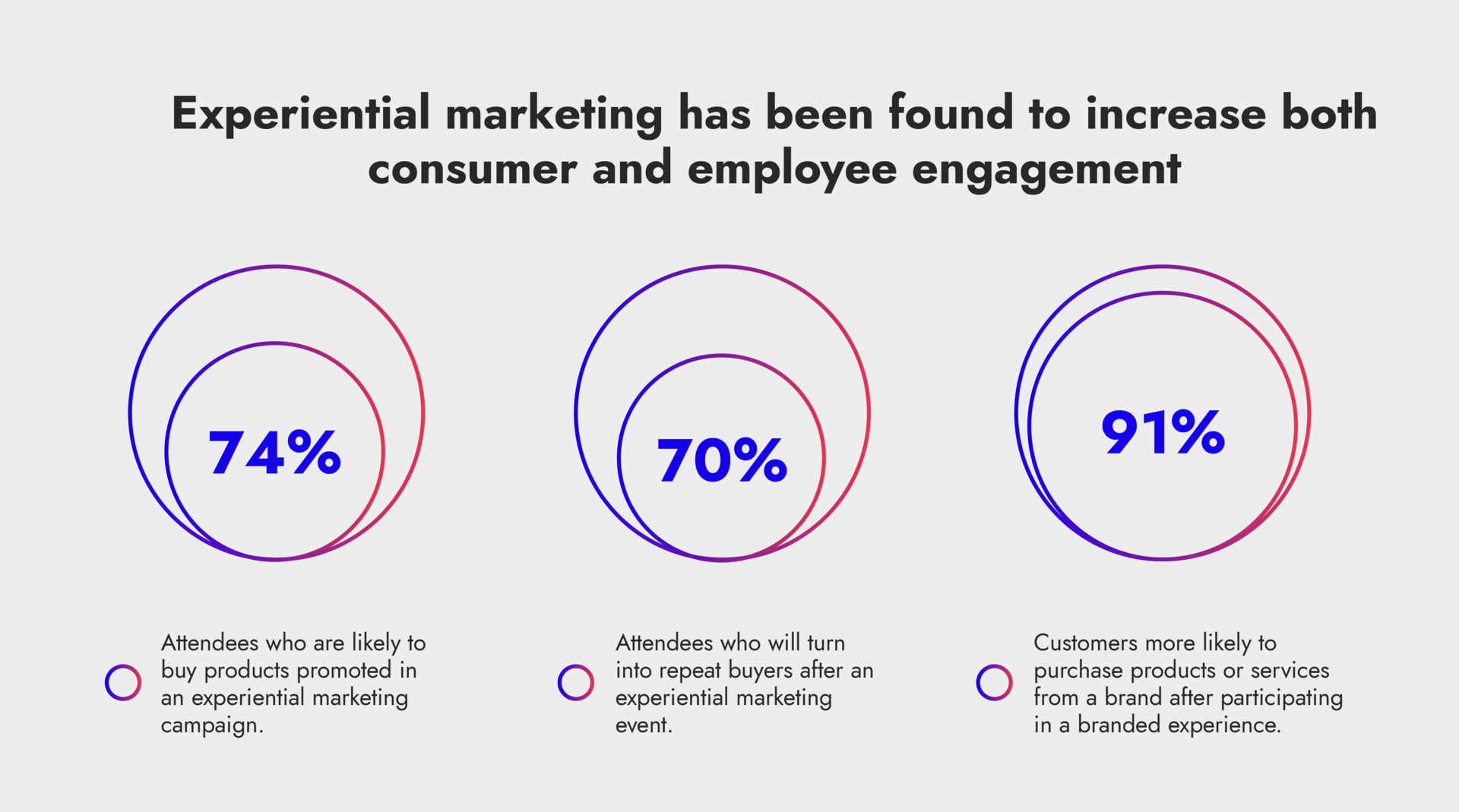
Why is customer engagement important?
So what is an engaged user? It is a consumer who is actively involved with or interested in your brand. This brand engagement can take place on your website, social media platforms and through immersive experiences that use memorable activities to cement the consumer’s emotional connection with a brand.
Engagement is the way brands create a relationship with their customer base to foster loyalty and trust, which is more likely to result in conversion and increased revenue. The cost of acquiring new customers is higher than the cost of customer retention – and engaged customers are frequently repeat customers who, as brand advocates, bring new consumers to the brand community.
Researchers Barari et al at Griffith Business School, Australia, note that “Both academic research and business practice consider customer engagement behaviour to be a key success factor in the long term, as the engaged customer is much more profitable for a business than other customers. However, firms have conventionally focused on developing a relationship with their current customers to influence purchase and repurchase and firm performance, thereby regarding customers with more transactional behaviour as better customers for firm profitability…
“From a customer engagement perspective, customer contribution to the firm is not limited to purchase-related metrics, as engagement behaviour results in, for example, new product ideas or referral of new customers. Therefore, customer engagement extends customer valuation from being merely transactional and includes both transactional and non-transactional metrics.”
The engagement/revenue connection is particularly strongly demonstrated in experiential marketing, where companies aim to create memorable interactions with customers to inspire a deeper emotional connection to the brand. When it comes to this customer engagement strategy, the main goal is not only to promote products or services but also to provide a unique and immersive customer experience that stimulates engagement and consequently boosts revenue.
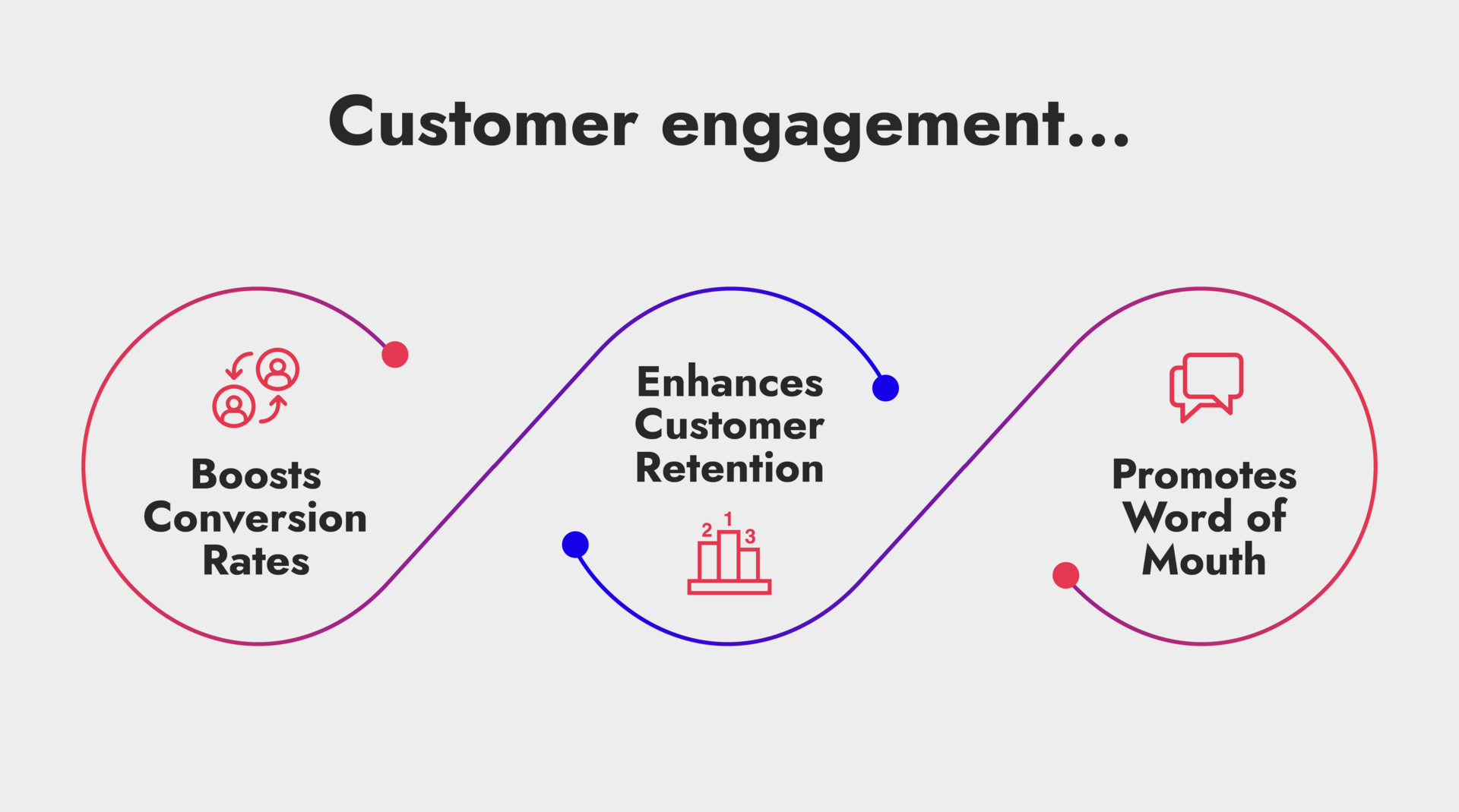
Customer engagement…
Boosts Conversion Rates: The first and most obvious way that engagement strategies lead to higher revenue is through an increase in conversion rates. When customers are engaged, they are more likely to make a purchase, subscribe to a service, or take another action that generates revenue for the business.
Enhances Customer Retention: Engaged customers are more likely to stay loyal to a business. High engagement levels often lead to higher customer retention rates, which, in turn, lead to more predictable and sustained revenue.
Promotes Word of Mouth: Engaged customers tend to share their experiences with others, both online and offline. This word-of-mouth advertising is incredibly valuable, as it often leads to new customer acquisition, leading to increased revenue.
By creating memorable experiences, businesses can foster a deeper emotional connection with their audience, leading to increased engagement, improved brand loyalty and potentially higher revenue. Here are a few ways this works:
- Enhances Brand Perception: Engagement marketing campaigns often serve to elevate a brand's perception. By providing a positive and memorable experience, businesses can increase the perceived value of their products or services, which can help justify higher prices and thus increase revenue.
- Drives Brand Advocacy: People tend to share exceptional experiences with others. An innovative and engaging experiential marketing campaign can turn customers into brand advocates, expanding the brand's reach and attracting new customers.
- Creates Emotional Connections: Experiential marketing helps create emotional connections between consumers and brands. This emotional bond can boost customer loyalty, leading to repeat purchases and higher lifetime customer value.
- Builds a Community Around the Brand: Engaging experiences often bring people together, creating a sense of community around a brand. This community can become a self-sustaining source of engagement and revenue, as members are more likely to stay loyal to the brand and attract others to join.
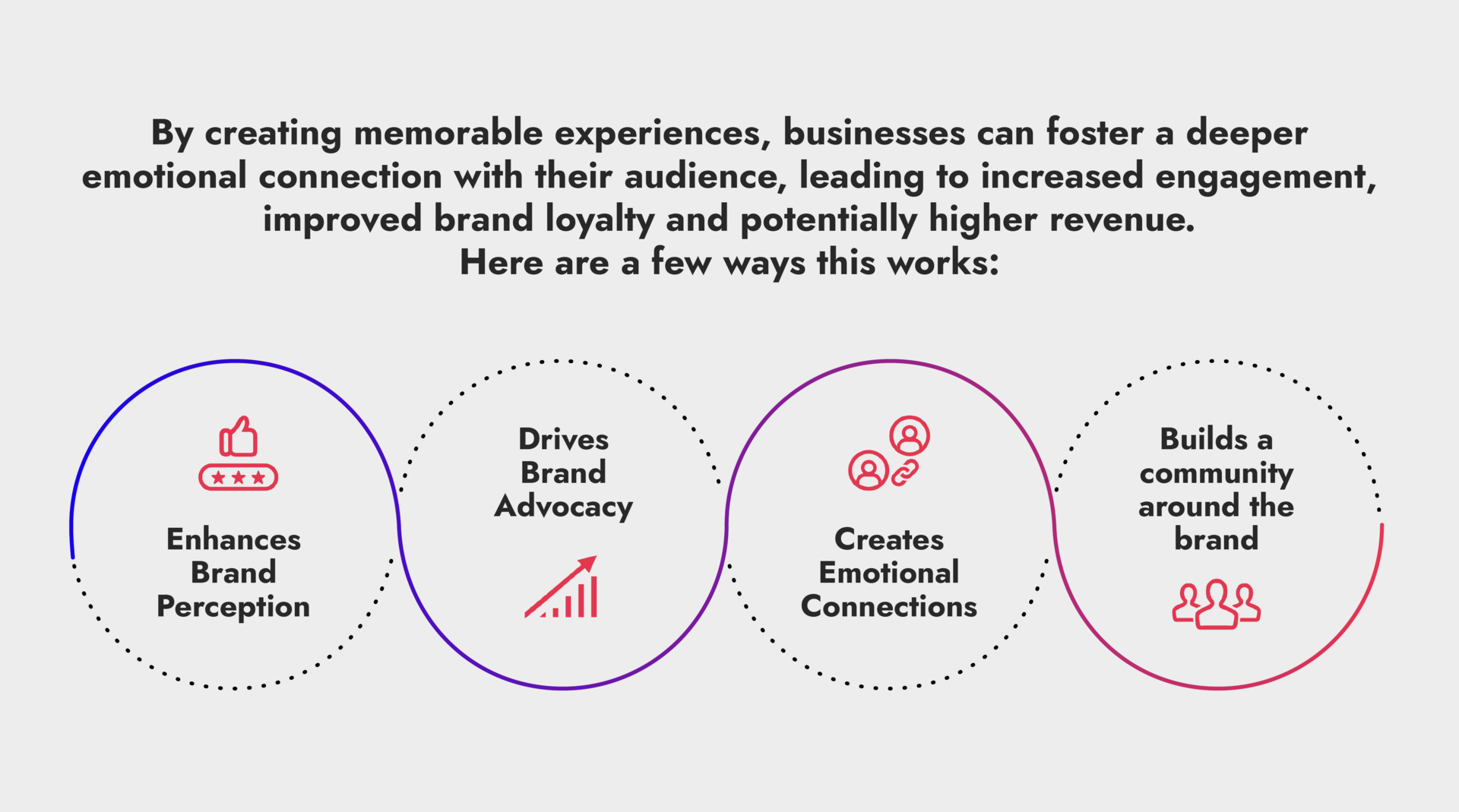
Why is employee engagement important?
How to improve employee engagement is an important human resources concept that defines the level of enthusiasm, commitment and loyalty an employee feels towards their position and the firm they work for. As with studies around consumer engagement and revenue, research shows a clear link between employee engagement and an organisation's operational performance.
According to Gallup’s data from 2.7-million employees, “engaged employees produce better business outcomes than other employees – across industry, company size, and nationality, and in good economic times and bad. But only 23% of employees worldwide and 32% in the US fall in the ‘engaged’ category.”
Engaged business teams were found to be 18% more productive and 23% more profitable than unengaged units. They also accounted for higher customer loyalty/engagement. Lower levels of absenteeism, accidents, theft, staff turnover and defects were other benefits.
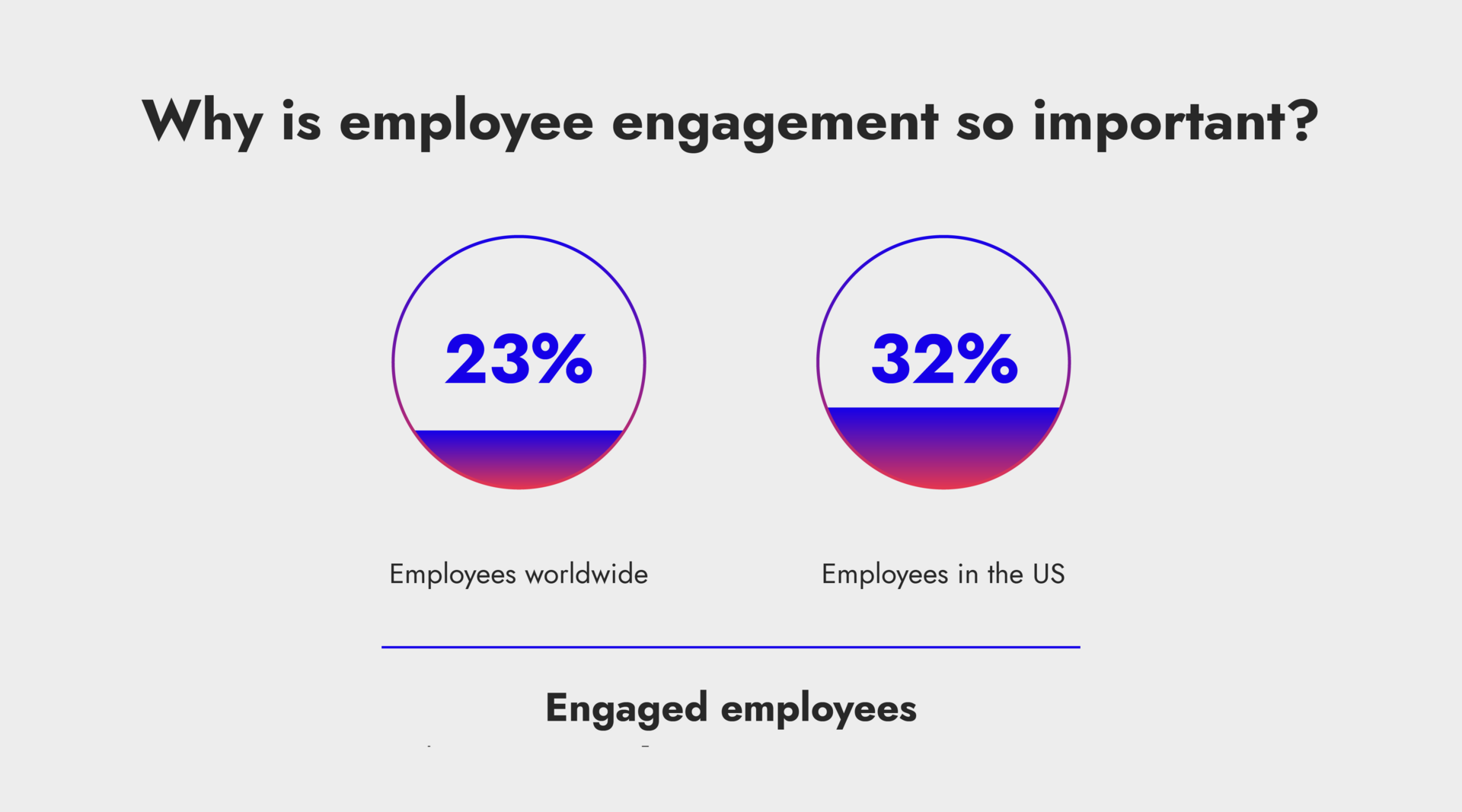
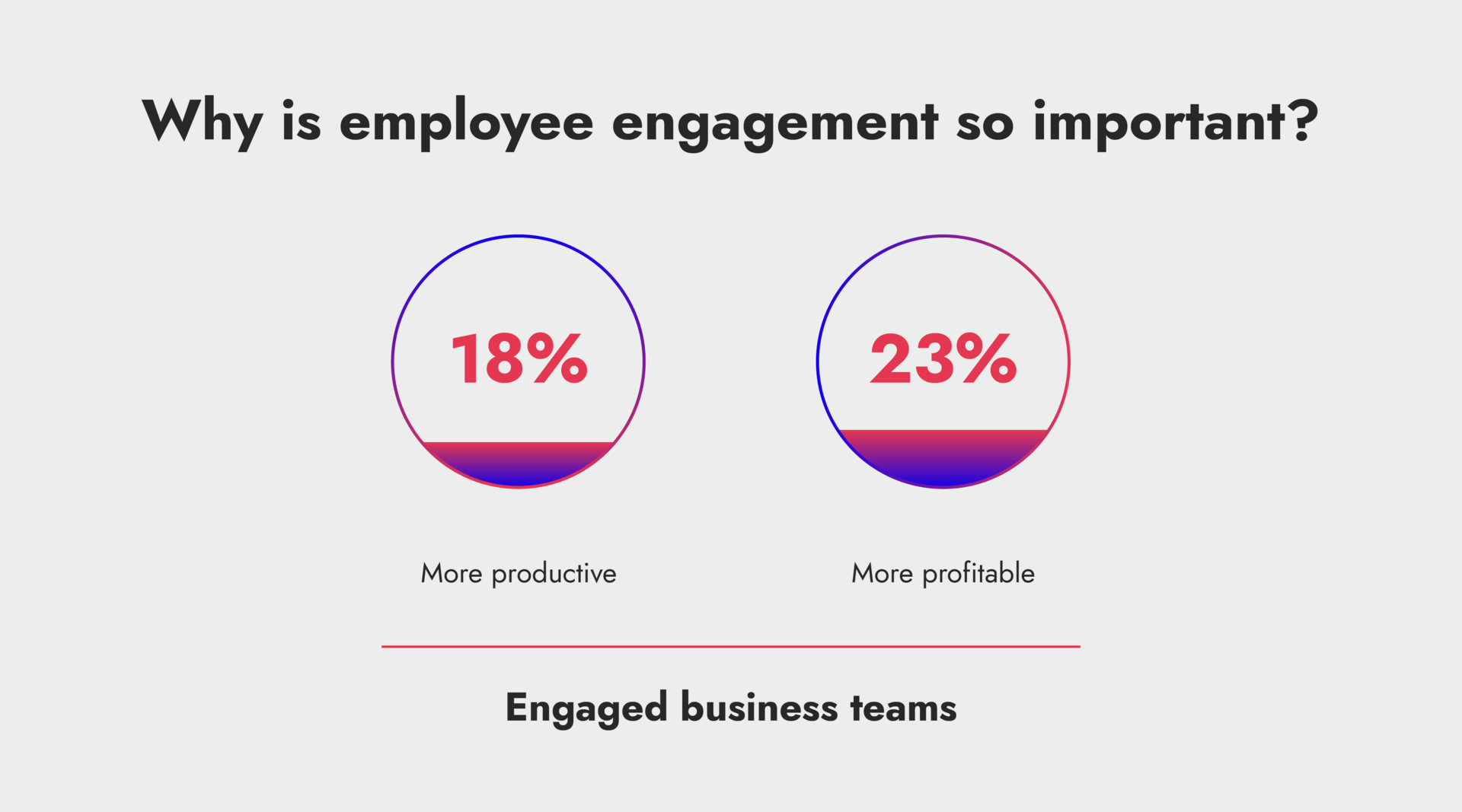
Employee engagement: business outcomes
Lower engagement and/or increased disengagement cost US corporations between $450 and $500 billion a year between 2010 and 2012. Consider that overall US employee engagement dropped for the first time in a decade in 2021 to 36% engaged, and that the trend has continued downwards to 32% in 2022.
The key drivers of employee engagement, according to the researchers were: purpose, development, professional relationships with co-workers and managers, ongoing conversations and a focus on strengths. The manager or team leader alone was found to account for 70% of the variance in team engagement.
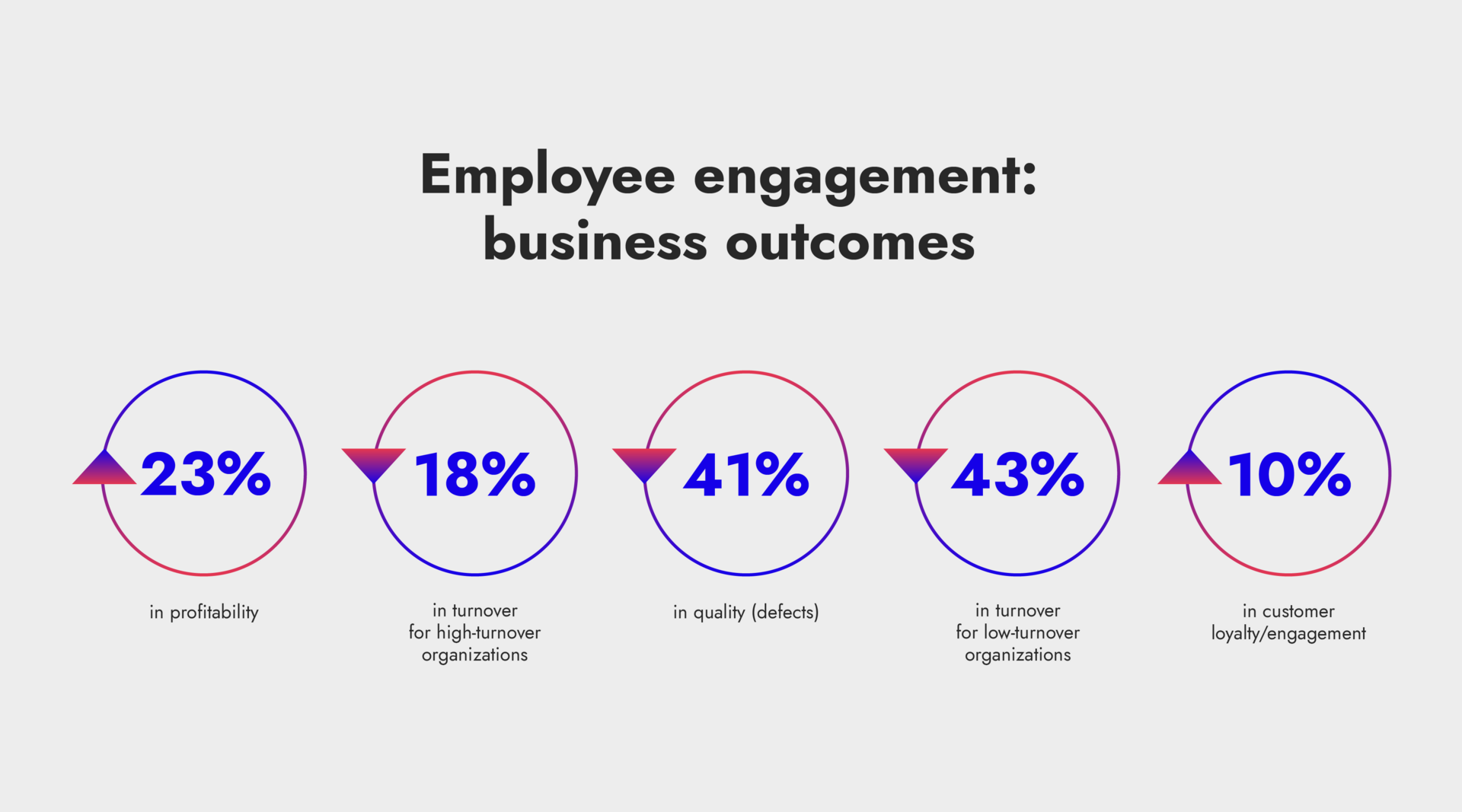
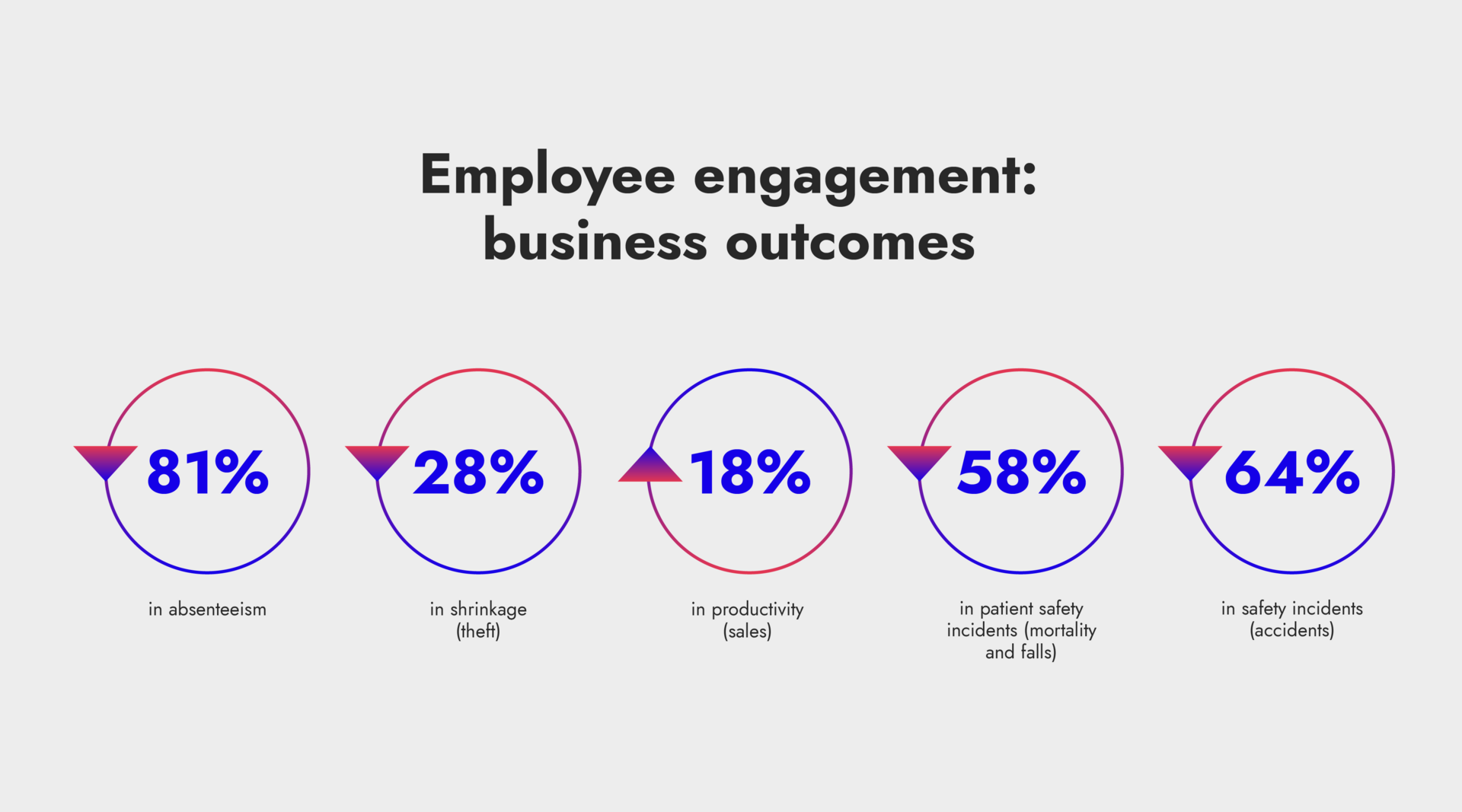
Measuring engagement
How is employee engagement measured? It usually involves asking – and evaluating employees’ answers to – carefully crafted engagement questions. Measuring consumer engagement is more complicated but is done by mapping engagement metrics such as website visits, app usage, time on site, click-through rates and other metrics relevant to your business.
Engagement marketing that involves creating immersive experiences to engage consumers, poses some unique challenges and opportunities for analysing the link between revenue and engagement during a specific campaign. But measuring the success of experiential marketing is important when assessing the return on investment (ROI). Experiential marketing often involves a blend of quantitative and qualitative metrics, so aim for a multifaceted analysis to demonstrate the overall impact on revenue. It is best to set clear goals and KPIs in the planning stages, and to track these throughout the campaign.
When measuring the ROI of an experiential marketing campaign, engagement (before, during and after the event) would be analysed along with the impact of the campaign on business outcomes: brand awareness, lead generation and sales. In other words, the engagement:revenue correlation.
Measurement could include in-person metrics like event attendance, the amount of time spent at the event, social media mentions and shares related to the event, sentiment scores from post-event surveys and other relevant KPIs.
Revenue from an experiential campaign could include prior and immediate sales at an event, upsell rates, subsequent sales that can be traced back to the event via tracking codes and longer-term metrics like Customer Lifetime Value (CLV).
Engagement marketing strategy plays a key role in helping businesses connect with their audience and their employees. There is a clear link between engagement and revenue, and measuring this correlation will provide valuable insights to drive business growth.



